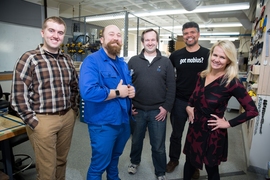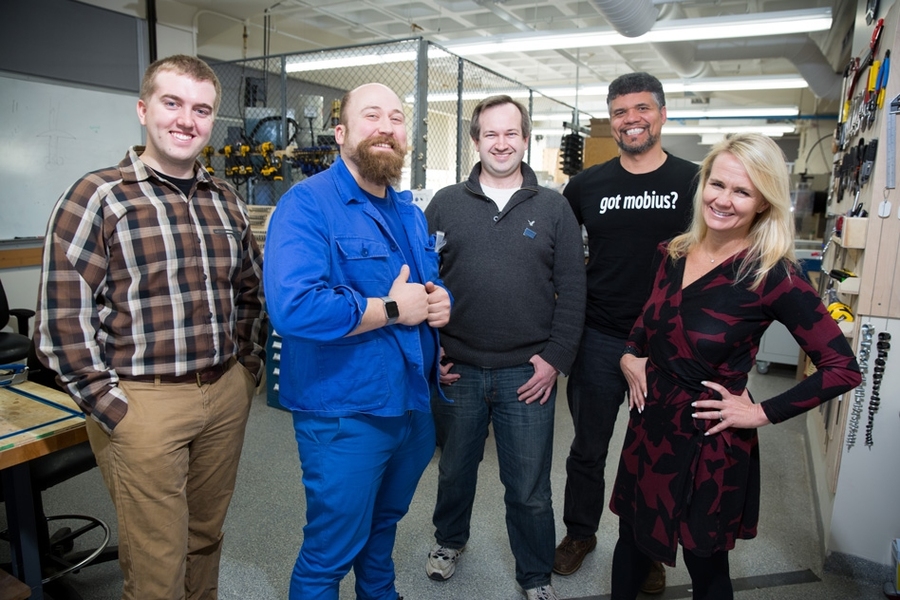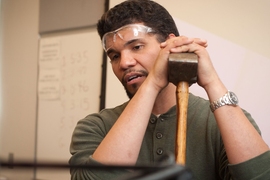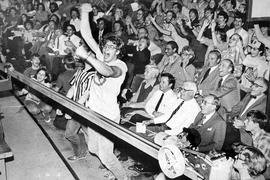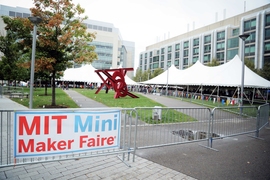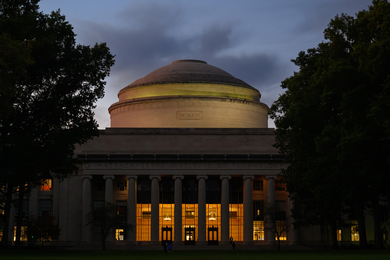With over 130,000 square feet of hands-on makerspaces, MIT has more of these facilities on its campus than anywhere in the world. Yet, according to findings from a student-wide survey conducted last summer, the top two places where MIT students make things are in their dorm rooms and off-campus. The reason? Students face too many barriers when trying to use MIT’s expansive maker infrastructure.
Students across the Institute need access to makerspaces not only for their studies but to work on personal and entrepreneurial projects. Rebecca Li, a junior majoring in mechanical engineering, notes that students often have to “hijack a club or lab’s machine shop access, pay many different membership fees, or stumble into little known shops like MITERS [MIT Electronics Research Society] and Maker Works.” According to Li, who helps manage the MITERS space as their facilities manager, the only way to find out about these options is effectively through referral. “If you are not involved in some builder club, lab, or group, you are unlikely to hear about all of the shops or what you have the ability to access,” she says.
In Aaron Ramirez’s experience as a PhD student, new arrivals to MIT have little idea of what resources exist on campus and are often lost as to where to begin and where to turn to for help. “Many of the incoming students, including myself long ago, never had exposure to or training on machine tools, rapid prototyping equipment, or instrumentation. These tools are essential for engineering and for obtaining and improving your skills as an engineer — it’s not just a hobby for us, it’s our life and passion, and necessary for our development,” he says. “Students have to put in a decent amount of effort to finally get access to the workshops, which is not trivial when you consider how much other stuff they have to do already, especially as a freshmen!”
No one understands these hindrances more than Marty Culpepper, MIT alumnus, professor of mechanical engineering, and the recently appointed MIT “Maker Czar.” He acknowledges that it can take a student up to nine months to get into a space and build anything, a startling statistic that doesn’t sit well with him.
“There are reasons why students have difficulty getting into these spaces,” Culpepper says. “One barrier is knowing where everything is. Another is, how do you get trained, whom do you contact to get trained, and once you’ve been trained, do other shops know you’ve got that skill set? How do you pay for things if you need to pay for them? All of these things stacked on top of each other make it very difficult not only for students to get things done, but for faculty and their research to get done.”
In an effort to address the situation, Culpepper has been charged with determining the best ways to increase student access to campus makerspaces, which in part means breaking down these barriers in a myriad of ways. “We know that MIT students want to design and build things. We know this is important to their education and to their desire to start companies. We are here to fix the problem and the first step to doing that is with Mobius,” says Culpepper.
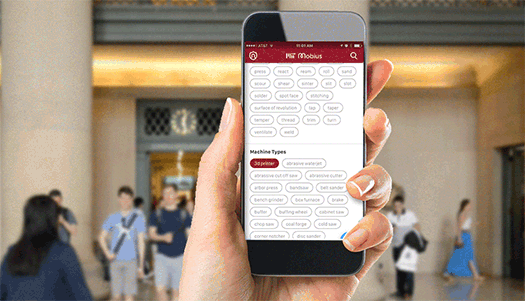
Designed to help the MIT community navigate a complex making system, the Mobius app (shown here), released March 4, enables users to search through the vast array of makerspaces and equipment on campus. (Christine Daniloff/MIT)
Mobius
Designed to help the MIT community navigate a complex making system, the Mobius app, released March 4, enables users to search through the vast array of makerspaces and equipment on campus. Developed in partnership with students, shop managers, alumni, and MIT’s Information Systems and Technology office, the app is the first of its kind. It was realized through the support of the Lord Foundation of Massachusetts and MIT alumni Colin and Erika Angle, who recognized the potential of Mobius to transform the maker experience for MIT students.
Available to download for iOS (with an Android version in development), Mobius will match users’ needs to maker resource availability as well as assist technical staff in managing their shops and improving student communications and interactions. Students who use the app will be able to locate that laser cutter or mill they need for their project from the convenience of their mobile device, saving them time spent searching for information that is not available online. Using the app also eliminates the step of having to call or walk to each space for shop hours, policies, and training protocols.
Li, who along with Ramirez worked with Culpepper to design the app, says that Mobius “will let people uncover which makerspace is both open and has the right machines for them.” She continues, “Knowing where certain machines are on campus, or even that they exist, will help people get things done and make more things. The most important aspect of the app is the elimination of the unknown of whom to contact or whom to ask for access. People will feel more confident knowing that they are talking to the right person who can get them help, instead of playing email ping pong as their project gathers dust.”
Other key features of Mobius include the ability to pay for materials, machine time, and access fees directly through the app. Additionally, shop managers will be able to check a user’s abilities with a built-in endorsement and flagging system, potentially allowing someone already skilled at machining and endorsed by another shop to fast-track their training to gain access in a different facility. In the future, users in turn will be able to rate their experience with a particular shop, providing helpful tips and advice to others in the maker community.
The future of making
For the last two years, Culpepper has spent his days learning about all of MIT’s makerspaces and visiting other universities across the country to explore theirs. The experience was eye-opening, leading to the realization that while MIT boasted the most makerspace square footage, its utilization rate was underwhelming.
Culpepper is determined to lead the future of making at MIT and beyond, with new technologies such as Mobius and other activities of the recently launched Project Manus. Initiated in October 2015 by MIT Provost Martin Schmidt and housed within the MIT Innovation Initiative, Project Manus will build capacity in MIT’s makerspaces and foster the maker communities that will create the gold standard in next-generation academic maker systems. Lessons learned on the MIT campus — including Mobius — will be shared widely so students and staff at other universities can take advantage.
“Today marks a very important first step in a journey to provide our community with seamless access to the vast maker resources on our campus, and to bring greater coordination of all these resources. In Mobius, and the other elements of Project Manus, Professor Culpepper has provided us with an exciting vision for the future and a roadmap to get there. I am grateful to Professor Culpepper and the MIT Innovation Initiative for advancing this critical effort to strengthen our innovation ecosystem,” said Provost Schmidt upon the app’s release.
Culpepper, whose work is just beginning, remarks, “Mobius is just one of five major programs that Project Manus is working on to improve the way MIT supports students and makerspace staff. I invite everyone to visit the Project Manus web site to learn more.”
